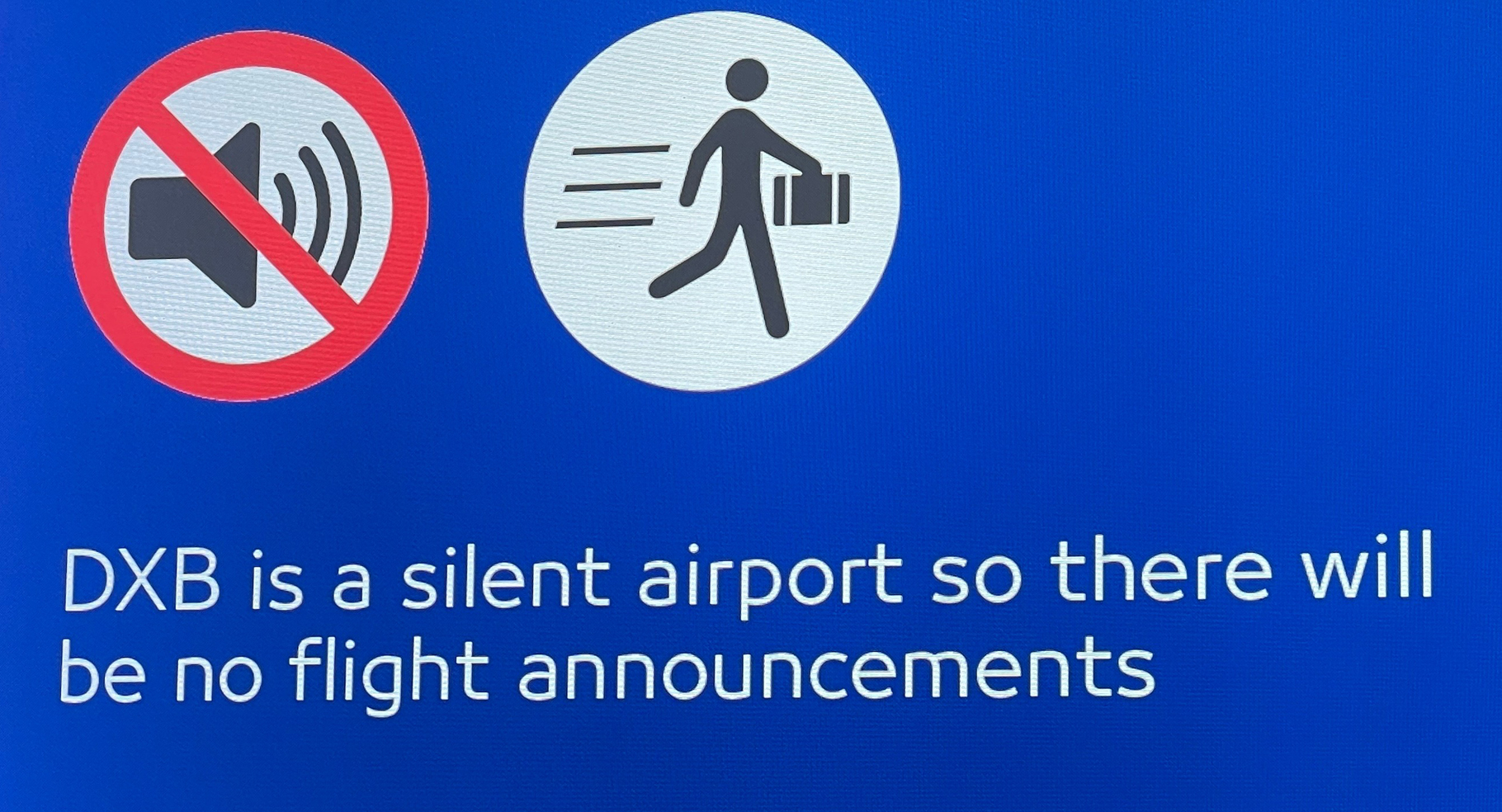Terminal Racket. The Scourge of Airport Noise

August 30, 2023
EARLIER THIS MONTH month I was in Berlin, boarding a plane at the new Berlin-Brandenburg Airport. Walking through the lobbies and concourses, something felt different. I couldn’t quite place it. The airport, only three years-old is spacious, clean, and well laid out. But it was more than that. It was something else.
Then it hit me. It was quiet! From the time we walked through the front doors, until the moment we arrived at the gate, not a single public address announcement played. Not one. The speakers were silent.
Every airport in the world should follow this model. Indeed, some are quieter than others, to varying degrees. Copenhagen and Amsterdam, for example, keep announcements to a minimum. But on the whole, airports are some of the noisiest public spaces we have, and the loudspeaker is mainly to blame.
Sure, terminals are packed with wailing babies, chattering TVs, and airport architecture seemingly designed to amplify, rather than quash, the collective racket of hundreds of people. But it’s those public address announcements that are the most aggravating culprit. Ninety percent of them are useless in the first place, and they’re often delivered at a volume severe enough to shatter windows. And with all the various microphones and speakers targeting different sections of a terminal, it’s not uncommon to hear two or three announcements blaring at the same time.
The result of this, whether you sense it directly or not, is stress. And if there’s one thing the air travel experience needs less of, it’s stress.

Berlin-Brandenburg Airport. Photo by the author.
The needlessness and redundancy of most announcements would be hilarious if it weren’t so annoying. And those few of any value are presented in such a tautological tangle as to be almost incomprehensible. Why say in ten words what you can say in a hundred?
At JFK, for instance, there’s an announcement that loops around every five minutes or so. It declares: “All areas of the terminal have been designated as smoke-free.” I’ll begin by asking if there’s anyone alive who’d be daft enough to assume they’re permitted to smoke in a terminal. But listen, also, to the language. JFK is the ultimate melting pot, and I have a healthy suspicion that, to someone with limited English skills, a phrase like “designated as smoke-free” has about as much meaning as a bird call.
Then we have the security announcements. Did you know that my hometown airport, Boston-Logan, is home to a program called “SAFE,” or “Security Awareness For Everyone”? I know this because I’m told about it over and over again while sitting at the gate. “If you see something, say something.” Important advice there.
We also have the one that goes, “If a stranger approaches you about carrying a foreign object…” A what? I picture a toaster with wires coming out of it. “Would you mind taking this to Frankfurt for me?”
Meanwhile, “TSA has limited the items that may be carried through the security checkpoint,” we’re told at Los Angeles International. “Passengers are advised to contact their air carrier.” The pointlessness of this counsel deserves no elaboration. Of the millions of travelers who’ve been subjected to this recording, I suspect the total number who’ve moved to action and “contacted their air carrier,” stands exactly at zero. To further fray our nerves and damage our hearing, it plays after you’ve gone through security.

Dubai Airport. Photo by the Author.
As does the one that goes, “Los Angeles International Airport is closed the general public, and only employees, ticketed passengers, and those directly assisting passengers qre allowed on the airport property” (I’m paraphrasing slightly). There is no need for this one, period, but the fact that it’s broadcast after passengers have been screened and cleared by TSA is surreally idiotic.
Indeed, the overseers of LAX have created what might be the noisiest airport in America. Among the racket is an absurd series of PAs that play outside, on the sidewalks, where the concrete overpasses increase the decibel level exponentially. Anyone waiting for a hotel shuttle or the rental car bus is subject to a mind-melting cacophony of unintelligible blather.
And although Americans have a deep cultural affinity for infantilization and condescension — as if every citizen is too stupid to get on an airplane, or to even ride an escalator, without a loudly barked set of instructions — we aren’t the only offenders. If you’ve ever been to the domestic terminal in Medellin, Colombia, or to Mexico City’s terminal 2, you’ll know what I mean. Bring a good pair of headphones.
Ironically, the actual loudest things at an airport — airplanes themselves — are almost never heard, buffered behind walls of glass and concrete. And it’s not until stepping aboard your plane that you can finally savor some silence.

Schiphol Airport, Amsterdam. Photo by the author.
Or that’s the idea, anyway. Alas, the airplane cabin has contracted this same scourge. Nowadays, the entire boarding process, followed by the first several minutes after takeoff, consist of nothing but announcements: safety videos that never end, ignored directives on how to stow your luggage, and those manifesto-length promotional speeches. On a flight recently I counted thirteen separate PAs during the boarding process alone, from either the gate agent or a cabin attendant.
Here’s the thing: nobody is paying attention. All these PAs do is create noise and leave people frazzled.
On one airline, a pre-recorded briefing plays during descent, telling people to buckle up, stow their tables, shut their laptops and such. The recording ends, and a second later a flight attendant comes on and repeats the entire thing.
Bad enough, but winner of the redundancy award are those announcements letting us know that “Flight attendants will now be coming through the aisles to [insert task here].” Seriously, we don’t need a heads-up on what you’re about to do any more than we need to know what color underwear you’re wearing. Simply do it.
All of this sonic pollution does not make passengers more attentive, more satisfied, or keep them better informed. What it does is make an already nerve-wracking experience that much more uncomfortable.
Berlin we turn our weary ears to you.
Upper photo courtesy of Unsplash.
Related Stories:
HOW TO SPEAK AIRLINE. A GLOSSARY FOR TRAVELERS.
FAREWELL TO CNN AIRPORT NEWS





